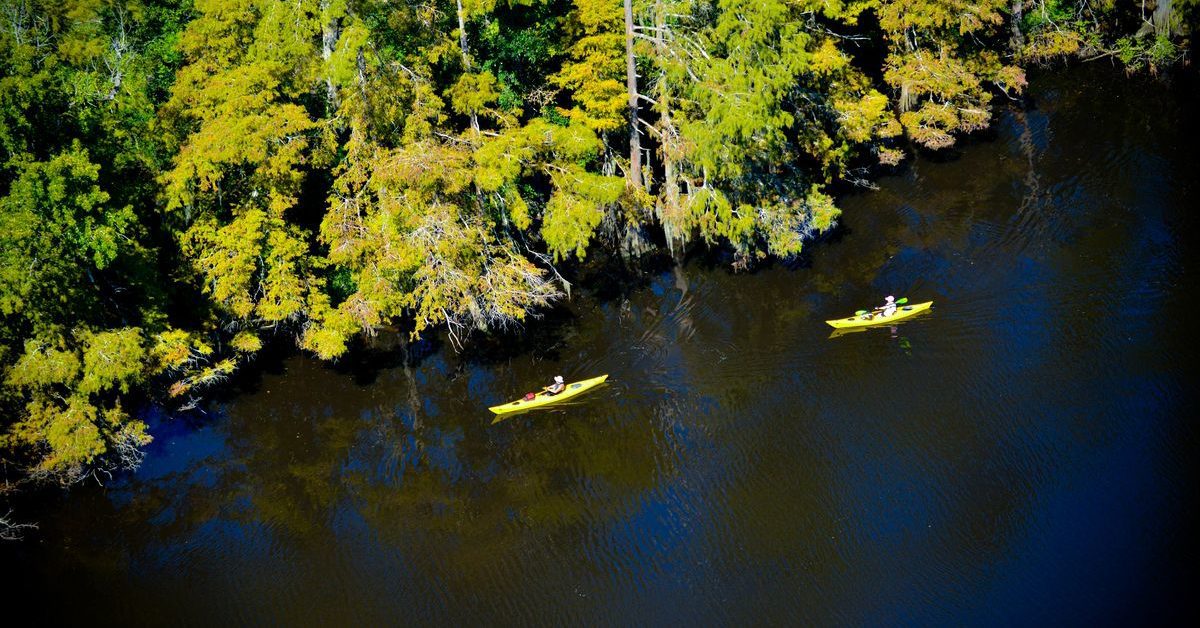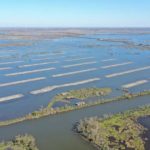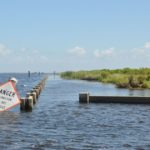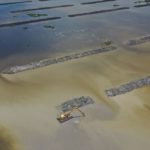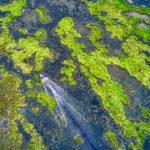Wetlands provide numerous benefits to communities and ecosystems. They provide humans with fisheries, water filtration, and flood protection. They’re also a major source of biodiversity, as numerous species of resident and migratory birds, as well as fish, insects, and plants, make their home in these watery environments.
Unfortunately, our nation’s wetlands are fast disappearing thanks to human development. Over half of the US population now resides in coastal counties and this has had a detrimental impact on wetland ecosystems.
According to data gathered by the US Department of Agriculture (USDA), 54% of all the wetlands in the United States had been drained or filled to make room for agriculture or commercial and residential development.
Realizing the threat to the environment and human communities, the federal government has enacted various laws to regulate pollution in wetland ecosystems, as well as conserve these ecosystems for current and future generations.
In this article, we’ll examine the main regulatory authorities that govern wetland mitigation on a federal and state level. We’ll also take a closer look at the Clean Water Act and the provisions that impact water quality in aquatic environments. Just as importantly, we’ll examine how wetland mitigation laws vary from state to state.
Who Regulates Wetland Mitigation?
The federal government is primarily responsible for regulating wetland mitigation in the United States. Many states also have their own wetland regulations that provide protections beyond the programs enacted by the federal government.
The main regulatory authority that governs wetland protection at the federal level is Section 404 of The Clean Water Act (CWA). Section 404 requires dischargers of dredged or fill material to first obtain permits before making discharges into the waters of the United States (including wetlands). Permits can be waived if the act is eligible for an exemption.
Five federal agencies are responsible for regulating wetlands. These are:
- The United States Army Corps of Engineers (USACE) – The Corps is responsible for issuing CWA dredge and fill permits to the private sector.
- The Environmental Protection Agency (EPA) – The EPA is responsible for establishing the Section 404 guidelines that the Corps must use to assess the impact of proposed projects when issuing permits.
- The United States Fish and Wildlife Service (USFWS) – The USFWS plays a major role in reviewing permits for projects impacting water resources in the United States (including wetlands and streams). This agency’s recommendations are vital for mitigating potential impacts.
- The National Oceanic and Atmospheric Administration (NOAA) – NOAA plays a key role in protecting and restoring the nation’s coastal wetlands. Restoration efforts include providing funding and technical assistance to restoration projects.
- The Natural Resources Conservation Service (NRCS) – The NRCS primarily focuses on reducing the impact of agricultural activities on wetlands.
Every state regulates its wetlands to some degree. While some states rely exclusively on the provisions found in Section 401 of the Clean Water Act to govern permit certifications, other states have adopted laws and regulations that require permits for activities in wetlands and other aquatic resources.
Twenty-three states have the authority to issue permits for the discharge of dredge and fill materials in wetlands, while 15 have the authority to regulate activities in freshwater wetlands, as well as coastal, shoreline, and tidal areas.
What is the Federal Wetland Mitigation Rule?
Also known as the Mitigation Sequence, the federal government’s Mitigation Rule encompasses a series of actions that must be followed to offset the impact of agricultural and commercial development on aquatic resources (including wetlands and streams). The Mitigation Rule is divided into three sequential steps: (1) avoidance, (2) minimization, and (3) compensatory mitigation.
The Mitigation Rule is outlined in the 1990 Memorandum of Agreement (MOA) and falls under Section 404 of the Clean Water Act. Jointly agreed upon by the EPA and the Department of the Army, the consensus was to apply the Mitigation Rule sequentially:
- Avoidance – This stage is focused on preventing adverse impacts on aquatic resources. In other words, if it’s possible to proceed with agricultural production or commercial development without causing ecological damage to aquatic resources, then avoidance should be observed.
- Minimization – If adverse impacts on aquatic resources cannot be avoided, then minimization must be observed. This stage focuses on taking appropriate and practical steps to minimize adverse impacts on wetlands and other aquatic resources.
- Compensatory mitigation – This stage is required to mitigate the adverse impacts on aquatic resources after avoidance and minimization have been applied. There are four approved methods of compensatory mitigation: preservation, enhancement, restoration, and creation (PERC). Three mechanisms are used to provide compensatory mitigation: mitigation banks, in-lieu fee programs, and permittee-responsible mitigation.
To learn which compensatory mitigation strategy is right for your project, consult a reputable environmental consultant for the water resource market.
What is The Clean Water Act (CWA)?
The Clean Water Act (CWA) is the United States’ main federal law that regulates the discharge of pollutants into the waters of the United States (WOTUS). The CWA’s primary objective is to maintain and restore the chemical, physical, and biological integrity of the WOTUS. Aside from improving wastewater treatment, the CWA is also instrumental in safeguarding our nation’s wetlands.
The CWA’s official name is the Federal Water Pollution Control Act (FWPCA). Originally enacted in 1948, the FWPCA was significantly reorganized and expanded in 1972. Further amendments were introduced in 1977 and 1987. These amendments greatly expanded the role of federal agencies and state governments in developing water pollution control programs.
The laws and regulations outlined in the CWA are primarily enforced by the EPA in cooperation with state governments. However, some of its provisions—specifically Section 404—are administered by the USACE.
The CWA forbids anyone from discharging pollutants from a point source into the WOTUS unless they have a permit from the National Pollutant Discharge Elimination System (NPDES). Developed by the CWA, the NPDES is a permit system that regulates point sources (i.e. single sources) of pollution. Point sources include industrial facilities, agricultural facilities, and government facilities.
The NPDES is managed by the EPA in partnership with state environmental agencies. Aside from mandating limits on what can be discharged, the NPDES also stipulates monitoring and reporting requirements and other provisions that safeguard human health and water quality.
A major provision within the CWA that impacts wetlands and other aquatic resources is Section 404. This section regulates the discharge of dredged and fill material into the WOTUS. Activities regulated by Section 404 include water resource projects (such as levees and dams), fill for development, mining projects, and infrastructure development (such as roads and airports).
A permit is needed before dredged and fill material can be legally discharged into aquatic environments—though exemptions are made for certain activities (such as forestry and farming). Permittees are required to abide by the Mitigation Rule, and must indicate that steps were taken to avoid and minimize impacts before resorting to compensatory mitigation.
Two types of permits are available: individual permits and general permits. Individual permits are required for potentially significant impacts and are reviewed by the USACE. Discharges that will generate minimal adverse impacts typically require general permits.
Do Wetland Mitigation Laws Vary by State?
Wetland mitigation laws vary from state to state, and most states and tribes have expanded their roles in protecting and managing their wetlands by adopting new programs and tools.
While many states rely solely on the provisions found in Section 401 of the CWA to govern permit certifications, others have adopted laws and regulations that require permits for activities that take place in wetlands and other aquatic resources found in their jurisdiction.
Overall, 23 states have the authority to issue permits for dredging and fill activities in wetlands and other aquatic environments.
Of these states, 15 (including Florida, Maine, New Hampshire, Oregon, and Minnesota) have the authority to regulate activities in freshwater wetlands, as well as coastal, tidal, and shoreline areas.
In Virginia, separate regulatory provisions govern tidal and non-tidal areas. In Minnesota, Massachusetts, and Florida, a single provision gives the state the mandate to regulate activities in both coastal and freshwater wetlands.
Illinois only allows one state agency, the Illinois Department of Natural Resources (DNR), to regulate state-funded activities and projects that impact wetlands.
Eight states (including California, Washington, and Louisiana) have the authority to regulate activities in tidal or coastal wetlands only.
Six states (including North Carolina, Tennessee, and Wisconsin) have the authority to allow activities in geographically isolated wetlands.
Twenty-two states (including Texas, Nevada, Alaska, and Montana) rely solely on Section 401 of the CWA to provide state-level regulations of wetlands and other aquatic resources.
